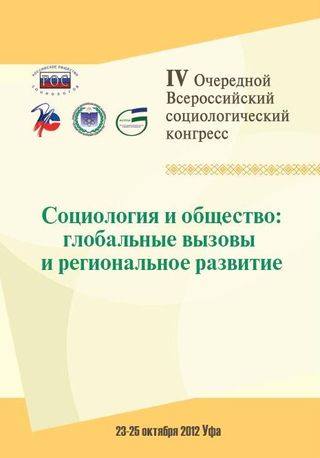?
Теория измерений как основа для выявления родства науки и искусства
С. 2894-2901.
Tolstova Y. N., В кн. : Тезаурус социологии. Книга 2. Методология и методы социологических исследований. : М. : ЮНИТИ-ДАНА, 2013. С. 192-264.
Словарные статьи написаны с использованием разработанных автором методологических принципов сбора и анализа социологических данных ...
Added: March 25, 2014
Podinovskiy V. V., Подиновская О. В., Проблемы управления 2012 № 4 С. 75-78
In authors' previous paper published in 2011 in «Control Sciences» journal one example of a bi-criterion decision analysis problem demonstrating that the use of Analytic Hierarchy Process (AHP) may lead to a clearly erroneous result is given. However, the author of another paper published in 2012 in the same journal suggested that he found an ...
Added: November 17, 2012
Tolstova Y. N., Voronina N., В кн. : Проблемы подготовки данных в социологическом исследовании. : Российское общество социологов, 2012. С. 99-113.
В работе предлагается подход к измерению сложных концептов, основанный на расширении принципов репрезентационной теории измерений, на примере измерения социальной напряженности ...
Added: March 18, 2015
Tolstova Y. N., Voronina N., Социологические исследования 2012 Т. 339 № 7 С. 66-77
Предлагаются пути обобщения принятого в социологии понятия измерения (лежащего в основе теории измерений). Способы обобщения опираются на анализ роли измерения в социологии, связи соответствующего шага с рядом известных и новых (предлагаемых авторами) методологических положений, касаю- щихся работы социолога. Эти способы опробованы авторами при разработке мето- дов измерения социальной напряженности (СН), что кратко описывается в статье ...
Added: November 18, 2012
Voronina N., Tolstova Y. N., В кн. : Математическое моделирование социальных процессов. Вып. 14.: М. : Социологический факультет МГУ, 2012. С. 131-145.
...
Added: March 20, 2013
Chirkina T., Khavenson T., Вопросы образования 2017 № 1 С. 207-229
School climate is a significant factor of educational achievement. However, relevant research in Russia is difficult due to the absence of instruments. The paper peeks into the history of the notion of school climate, discussing approaches to defining the term. It also describes the most widespread questionnaires used to measure school climate and provides an ...
Added: March 31, 2017
